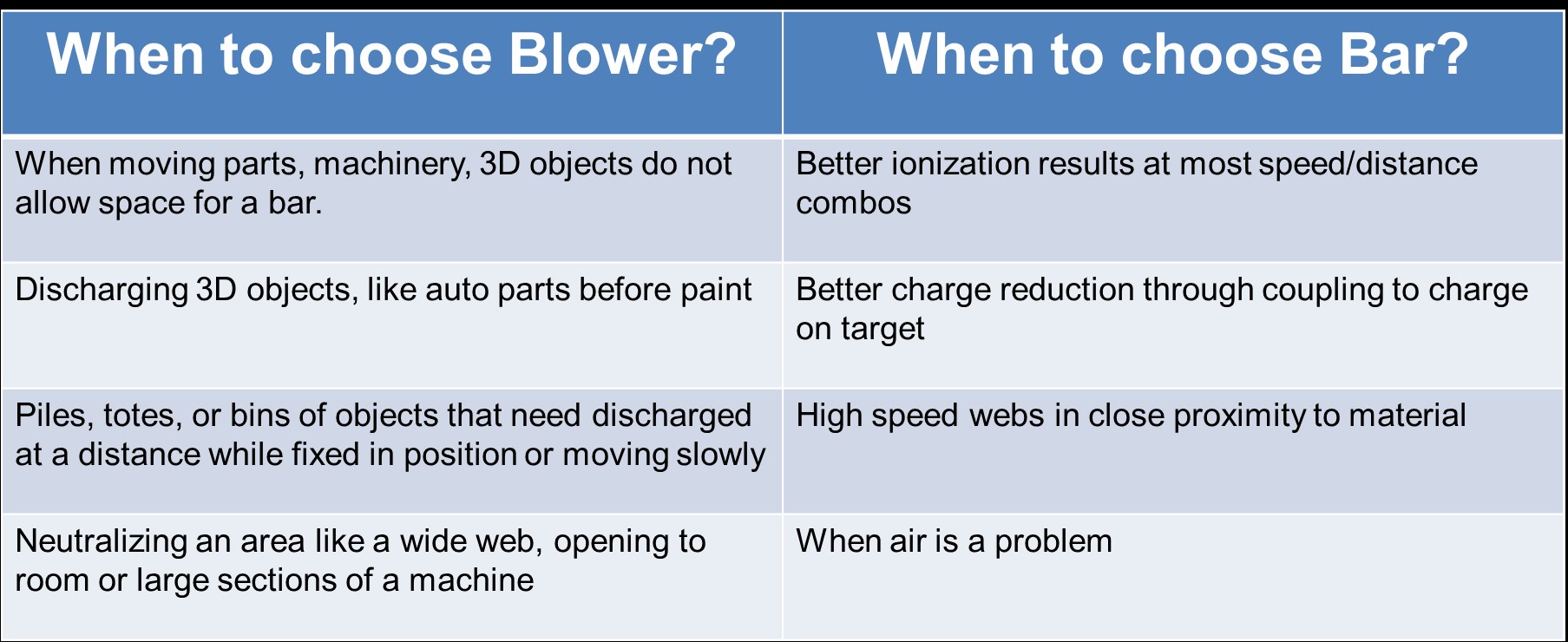With the recent release of the IQ Power™ Fantom Wide-Format Blower, there has been a lot of interest in ionizing blowers. Some of the most common questions have been regarding how blowers and bars differ, when to use each and how each function in different applications. Before we compare the two, here are the basics of how each function:
A bar is simple in theory, power is applied to create a charge in the emitter pins. The charge on the emitter pin creates air ions which carry the charge to its target. This charge is naturally attracted to the opposite charge that has built up on the web as it moved through the manufacturing process. Because of this, bars are effective within inches of the target. Since a bar must be placed closer to the target, it means more ions make it to the web which enables neutralization of higher speed targets.
Blowers have essentially the same technology but instead of relying solely on the attraction of oppositely charged particles, they use forced air to propel ions. This makes blowers effective at eliminating static on a 3D object, slower speed webs, and at a greater distance. In the Fantom’s case, the target can be up to 20 feet away. The benefit of a blower when compared to a nozzle or air assist bar is that it doesn’t require compressed air.
Now that the fundamentals have been laid out, it is time to consider the best product choice for the application. Traditionally, bars are used when there is room close to the web, since bars are most effective within a couple inches of the web. Due to the proximity to the web, bars are able to couple to the charge on the target. This makes them more effective on high speed webs.
However, there isn’t always room for bars. Manufacturing processes with moving parts, machinery, or 3D parts don’t leave space for equipment close to the web. Blowers are effective in these situations because of their ability to work from greater distances.
Blower can blow ions that spread over an object’s surface which makes discharging 3D parts an ideal application. The same air used to propel ions also helps to dislodge any neutralized debris as well. This is extremely effective for processes like prepping auto parts for paint.
Both products have a place in static control. The processes being used, amount of static, or type of environment will determine which option is best. Fortunately, Simco-Ion Reps are extremely knowledgeable in the subject and are the best resource for advising on an individual basis.
